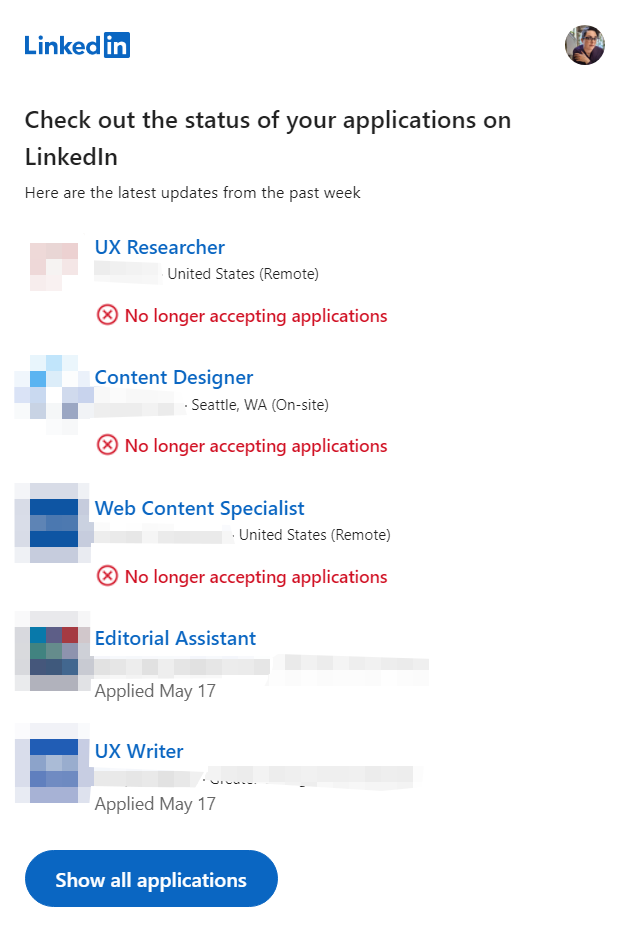“The design should always keep users informed about what is going on, through appropriate feedback within a reasonable amount of time.”
Nielsen’s 10 Usability Heuristics for User Interface Design
Applying for a job opening via nearly any type of online portal is an exercise in flinging your resume into a black box.
Some sites offer the appearance of visibility—an “application status” view—but I’ve never found this to be meaningful. The only way you know if your application goes anywhere is (a) if the recruiter/hiring manager reaches out to schedule a chat or (b) you receive a “we know it takes guts to put yourself out there, but it’s a nah from us” (typically automated; not uncommonly including some frankly unnecessarily condescending language I’m sure is meant to be a nod to respecting applicants’ time and effort).

It’s not that I’d ever expect a true, realistic tracking of every application once it reaches its destination, but as part of this evaluation, it’s worth noting this as a pain point for job seekers. For example, in my own application tracking, I code “rejection” and “assumed rejection” separately. At the end of each month, I move every unanswered application over two months old from “awaiting response” to “assumed rejection.” To date, I have about 50% more assumed rejections than explicit ones.
Beyond the black box of job applications, there’s the overall system visibility—the context of companies doing the hiring and the industry as a whole—to consider. Candidates have a few tools at their disposal to research: online commentary and company information, review sites like Glassdoor, or good old-fashioned human connection and word of mouth. (I guess some people call this “networking,” but I’d rather eat glass.) Each of these helps paint a picture of what’s going on, but must be taken with a grain of salt.
Prospective candidates are unlikely to have any awareness of things like internal upheaval resulting in job openings being canceled or the effect of downsizing on recruiters’ workloads. Nor can we always suss out when hiring has been delegated to a third-party recruiter, further diluting the context of the role and system it falls into.
It isn’t typically feasible to inform candidates about these constraints, but ensuring that even automated rejection messages are sent to all applicants would be an improvement on the status quo. As for visibility of the system status of companies and industries themselves, well, that’s undoubtedly a far broader issue.